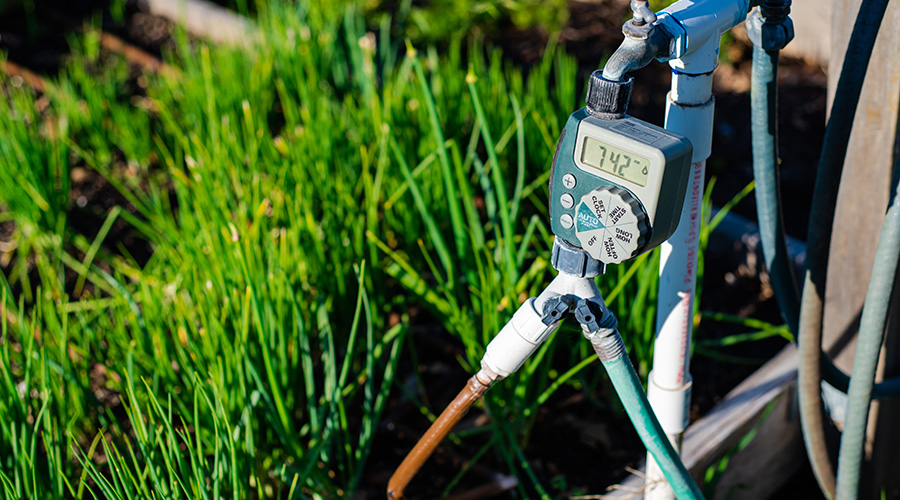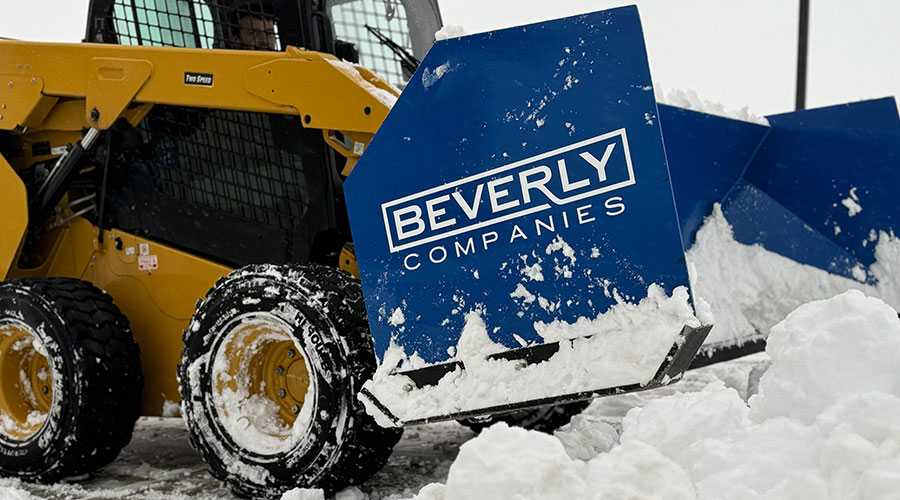Accessories to Success
A growing range of attachments for mowers and utility vehicles help departments make the most of investments in big-ticket equipment
When it comes to grounds care equipment, mowers and utility vehicles have been the primary workhorses of most operations. Now, with the plethora of attachments and accessories available for these machines, their usefulness and versatility is on the rise. Managers might find that this equipment can be used all year round, increasing staff productivity and making each piece of equipment more cost effective.
Know What’s Available
Some of the most popular attachments for mowers include snow blowers, blades, trailers, rotary brooms, debris and leaf blowers, vacuums, bed shapers, aerators, dethatchers, line trimmers, pavement edgers, stump cutters, sprayers and spreaders.
Useful attachments for tractors include mower decks, trailers, backhoes, loader buckets, augers, scrapers, rakes, aerators, snow blowers and blades, seeders, brooms, vacuums, topdressers, sprayers and spreaders.
Accessories also include specialty tires for use on various terrain, roll bars for added safety, light kits for working in the dark, hour meters to help determine when routine maintenance is due, hitch kits for pulling trailers, and canopies or cabs to protect the operator from harsh weather.
Needs and Priorities
Managers can assess department needs by making a list of activities crews are responsible for during the year and the hours each requires. Make a list of activities that could be accomplished with the right equipment and staff. Next, prioritize these activities. Look over the list and compare the projects to the list of equipment or attachments that are available that might help increase productivity.
Managers need to avoid getting caught up in excitement and marketing hype. Many attachments look great but might be a waste of money or add work to busy schedules. If an attachment might allow crews to complete a task that they don’t already do, managers should ask how important the task is. More than likely, if it was really important, crews already would be doing it.
Tools on Hand
Once managers make a list of attachments or accessories that might be valuable to an operation, they can then make a thorough evaluation of current equipment.
Some new attachments can be adapted to the existing mowers or tractors. Check with equipment dealers or the manufacturer. Many attachments are specific to a particular make and model, but sometimes they are specific to a manufacturer.
Other attachments, such as aerators, sprayers and spreaders, are universal and can be used with most name brand equipment. Some manufacturers endorse third-party attachments for use with their equipment.
Adequate power is essential. Make sure existing equipment has an adequate engine size and proper hydraulics to run any attachments. Some attachments, however, are equipped with their own power and do not rely on the tractor or mower.
In evaluating current equipment, managers might discover that buying new equipment is most cost effective. Buying a new mower or utility tractor gives managers the perfect opportunity to research all available options, including accessories.
If mowing is the most important activity to be accomplished with a machine, managers should make sure the equipment meets mowing needs first. Then they can decide if it accomplishes other tasks. But if mowing is not the primary function, then versatility should take precedence.
If an older mower is ready for retirement but remains in adequate working condition, managers can consider outfitting it with a time-saving broom, vacuum or any other attachment that would be valuable and would not strain the vehicle. This might be a way to extend the useful life of the equipment. Remember that frequent breakdowns and excessive repairs add to inefficiency, are costly and will quickly consume any time saved by using the attachment.
As with any piece of equipment, managers and crews should test a machine and all of its desired attachments before buying. Have a mechanic inspect the equipment for ease of maintenance, and allow operators to practice using the attachments, as well as taking them off and reattaching them, especially if this is to be frequently or in the field.
Purchasing attachments for a mower or tractor might seem like a great way to increase productivity, but consider the current schedule of the equipment. If the idea is to to add an aerator to a tractor normally used to pull a mower, managers need to make sure that mowing is not a critical operation that must be done at the same time as aeration.
Best Bets
The best attachments are those that extend the use of a piece of equipment into other seasons when it normally is not productive. For this reason, snow blowers and leaf vacuums are the two of the most popular attachment for mowers.
Some attachments and accessories enable a machine to perform two or three functions at the same time. One such attachment is a blower mounted to a mower that blows the grass clippings while mowing. Such attachments might not be suitable for use in all areas, but they are worth looking into.
Often, several workers share utility tractors, mowers and attachments, so managers will have to set up guidelines set for scheduling the use, maintenance and upkeep of equipment. When equipment is shared, it is too easy to let “the other person” assume responsibility for routine maintenance and fixing breakdowns.
This strategy ensures that one person is responsible for equipment. Anyone wanting to use it must check it out from the responsible party. It also prevents scheduling conflicts and ensures equipment repairs are made promptly.
Additional Factors
The decision to purchase attachments touches on a number of other issues that managers must consider before making a final decision. Among the issues are these:
Cost. The cost of attachments usually is less than that for a dedicated piece of equipment, but managers should do their homework to make sure the attachment is really time saving and convenient to use. Crews might be better off using a piece of lower-priced, walk-behind machinery or hand-held tools or simply renting equipment as needed.
Storage and transportation. If shop storage is a concern, attachments usually will require less storage space than a separate, dedicated piece of equipment. Managers also should be aware of transportation needs. Will a current trailer carry the tractor or mower, along with the needed attachments? Consider weight, as well as physical space on the trailer.
Safety and inspections. Make sure operators are properly trained to install and remove the implements frequently used. If attachments are installed only once a year and left on for the entire season — such as a snow blower — managers might find it more productive to have one person trained in equipment set-up.
Also, users should perform safety inspections immediately before the equipment is used. Whether the attachment involved is a mower deck or snow blower, the machine and attachment should be inspected before each use to be sure it is in proper working order. Safety inspections are extremely critical when attachments are changed frequently because connections and parts can become worn or loose.
Maintenance. Mowers and tractors might require different maintenance routines if they are used for jobs other than mowing. Check with the manufacturer, and follow the guidelines in the owners manuals. Exposure to salt, ice, rain, dust and dirt can affect routine maintenance of the machine and its attachments. Also, performing more heavy duty jobs with a machine can reduce its life expectancy. Consider the initial cost of the machine and its replacement cost before using it for more strenuous tasks.
It might be more cost-effective to buy a separate machine for certain jobs. For example, if areas normally receive frequent or heavy snows in winter, managers might not want to subject an expensive mower to heavy-duty plowing. A separate tractor that is more durable might be a more cost-effective option. It will save wear and tear on the mower, and it most likely will move snow more efficiently.
But if snow is infrequent and light, a snow blower attachment for a mower might be exactly what is required to improve efficiency and get more versatility from your equipment.
Getting more done with fewer people and less money is a constant battle for most, if not all, grounds care managers. Using attachments and accessories for mowers and tractors is worth serious consideration to help meet this constant and critical challenge.
Related Topics:











